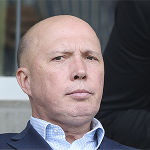It has been 27 years since Princess Diana tragically died in a car accident in Paris. That makes her one year younger than I am now.
I remember standing in front of the TV, watching the breaking news report as people laid flowers outside the tunnel entrance. It was early. No one really knew for certain what had happened, but friends and relatives across the world were picking up and calling each other. Did you hear??? I also remember what I was meant to be doing that day – attending my first Sunday School session (which I was thrown out of after ten minutes).
There are not many moments in history that solidify in the mind and are deemed important enough for our brains to take what amounts to a photograph of the event.
These Polaroids of history include 9/11, the Moon landing, and the death of Steve Irwin. I’m sure you have a few more.
The overwhelming sentiment, after the shock had settled, was that the press at large should (and would) learn from the death of Diana. They were considered accomplices to the tragic accident that saw a woman under incredible scrutiny and pressure pursued to her grave by rapid photographers desperate to get that next tabloid front page.
Well, the press got their front page.
It’s a shame their remorse was woefully short-lived.
And yes, I am aware that a 1999 investigation by the French ruled that the driver was responsible for the accident, being under the influence of alcohol and prescription drugs. However, the events that led to Diana being in that car were more complex, including being forced to abandon an earlier venue and make attempts to sneak out the back of the hotel. She lived her life with the snapping jaws of the camera shutter around every corner. For what it’s worth, those pursuing the car were also roped into the blame.
Ironically, it was via the press that 2.5 billion people watched her funeral and the press who ultimately profited from both her torment and her departure.
Diana was one of the most photographed women in the world, and I find it sad that a single image of her perched on the diving board of super-yacht ‘Jonikal’ is what came to symbolise the state of her life.
Moored off the beautiful Italian tourist town of Portofino, she was on a private vacation and yet also in the centre of a photo frenzy producing bids of upwards of £500,000.
Was she pregnant? Was she lonely?
The intense and hurtful speculation crammed into a fraction of a second of unscripted behaviour fabricated by strangers is not so different from the trending hashtags of social media. Netflix is still making money off this image, recreating it for their biopic Diana and again for The Crown.
While we are lectured to about the ills of social media, never forget that mainstream media and in particular, the tabloid press, are the curators of misinformation and disinformation expressly for profit. Their faux outrage at online conspiracies is nothing short of hypocrisy.
If Diana had gone on to marry Dodi Fayed, the image on the yacht would have been repurposed as a symbol of peace and a new beginning. If she had left him, it would have been mustered as evidence for a lonely princess. Images can be powerful, but without words, they are easily manipulated.
Diana’s younger brother, the 9th Earl Spencer, said of her relationship with the press that she wished to leave the UK because, ‘…of the treatment that she received at the hands of the newspapers. I don’t think she ever understood why her genuinely good intentions were sneered at by the media, why there appeared to be a permanent quest on their behalf to bring her down. It is baffling.’ He added that she was ‘the most hunted person of the modern age’.
It sounds familiar. Look at how the current Princess of Wales was treated when, frail and ill as she was, she went to the effort of having a portrait commissioned by professional photographers outside on a park bench – all to quash ridiculous speculation and calm manufactured lies that were damaging the Royal Family and harming her children.
The result?
Another wave of lies and speculation, all geared around the idea that these images were ‘AI generated’ to conceal some great insanity that she was dead or had been killed by some shadowy cabal. No matter the Princess’ intentions, the result was always malicious from those who had found a way to montetise speculation. In this way, engagement farmers on Twitter (those enormous accounts that earn money from saying absurd things about famous people) are no different – in any way – to the tacky tabloids who put up a fake story about a star being ‘pregnant’ just because her stomach isn’t wash-board flat.
There were conspiracy theories in the pre-social media, tabloid-run days. The Independent put up photographs of the headlines shortly before Diana died – headlines from The Sun, Daily Mirror, Daily Star, Daily Express, The Guardian, The Daily Telegraph, and The Daily Mail to name a few. Almost all of them a carbon copy: ‘Queen orders Diana divorce.’
Fake news, writ large, on every broadsheet.
Fake news that stirred up a predatory scrum of photographers who crossed countries to snap a candid image of the Princess – anything that could be used to justify a repeat of the headline to sell another paper.
It is for this reason that I do not believe a word of their remorse in the days and months that followed her death – or the claims today by media giants that ‘social media is dangerous’ because it is ‘profiting from misery’. Do they own a mirror? These publishers are bleeding money to social media – that is what they care about, not the heart and soul of truth.
Our laws are in danger of silencing citizens, to the joy of small-minded control freaks in politics, all to protect the bank accounts of vulturous media organisations. This, they tell us, will protect democracy.
I hate to think what we would see and hear today if Diana had been chased down a tunnel in Paris. No doubt we would be reading the real story on Twitter, as published by eye-witnesses through a series of photos and videos. There would be a tide of fake news, claiming previous photos of the princess sitting on a diving board were AI and that she had been dead for months. Then we’d have a flourishing ecosystem of conspiracy theories surrounding who had really killed her and in the end, the tabloid press would still be skimming off the top, taking profit from both ends of the story.
The way back to truth and dignity for society, I suspect, is through the rise of social media chipping away at the dominance of publications that have owned the narrative for too long and misused their power for profit. A new balance will form, eventually, if it is allowed to do so without interference from the political class who are playing a different game altogether.
Will we then learn the lessons of Diana’s death, I wonder, and curb our obsession with other people’s private lives…?
Perhaps this will not be left up to the press. The obsession with celebrity began in the era of the great Hollywood stars and, by extension, the famous names of the rich. Today, over-exposure has seen that curiosity wear off. Even Diana’s wayward son, Prince Harry, has struggled to maintain his fame beyond the Royal Family with streaming shows cancelled and invitations going astray. Not only are celebrities somewhat – less?– impressive than they were 50 years ago, their faces bombard us all day long. We’re over it. Most ‘famous’ people walk unrecognised down the street.
That is probably for the best.









